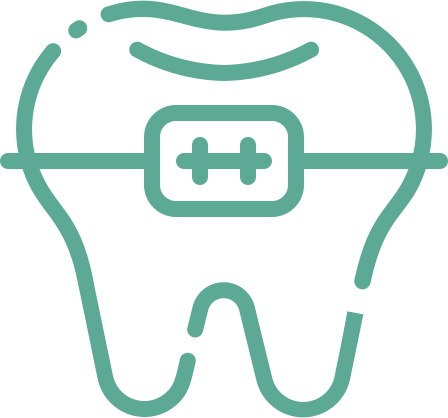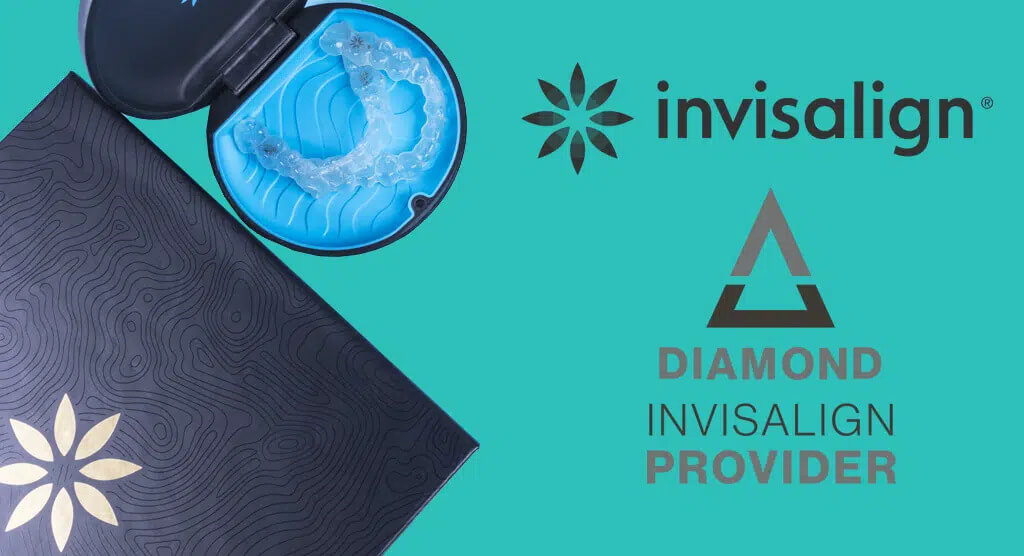
Orthodontist For Teens Newcastle WA
Orthodontic care can be one of the most impactful steps in shaping a healthy, confident smile for life. At Orthodontic Excellence, we understand the importance of addressing dental concerns during the teenage years, when timely orthodontic intervention can help correct developing issues with efficiency.
For parents and teens in Newcastle, WA, our practice offers a trusted approach to orthodontic care designed to fit both health needs and lifestyle.
Why Orthodontic Treatment Matters for Teens
Orthodontic treatment in the teenage years offers unique advantages. Between the ages of 11 and 15, most permanent teeth have emerged, making this an ideal period to address common issues like overcrowding, bite alignment, or spacing.
Misaligned teeth or bite issues can lead to difficulties in areas like speaking, chewing, and maintaining oral hygiene, which, if left untreated, could result in more extensive dental work down the road. Correcting these concerns early on can prevent the development of more serious issues, such as jaw pain, tooth wear, and gum disease.
Choosing a Local Orthodontist in Newcastle, WA
Selecting a local orthodontist can be a game-changer for teens and their families. Orthodontic Excellence in Newcastle, WA, offers the advantage of proximity, making routine appointments and check-ups convenient.
With our team in Newcastle, you’ll have access to experienced orthodontic professionals who understand the unique needs of local teens, providing a convenient, time-respecting experience without the hassle of travel.

Types of Orthodontic Treatment for Teens
At Orthodontic Excellence, we offer a variety of treatment options tailored to address teens’ unique needs and preferences. From classic braces to more modern solutions, our goal is to find the treatment that best fits each teen’s lifestyle and orthodontic needs.
Traditional Metal Braces
Metal braces are one of the most reliable and effective options for teens, providing a durable solution for treating various alignment issues. Today’s metal braces are designed with smaller, more comfortable brackets, delivering consistent results in a streamlined treatment.
BENEFITS:
- Effective for correcting complex bite and alignment issues.
- Reliable, continuous treatment for predictable results.
- Allows for personalization with colorful bands, making braces more fun.
Ceramic Braces
For teens looking for a less noticeable option, ceramic braces offer an effective and more discreet alternative to metal braces. With clear or tooth-colored brackets, ceramic braces blend with natural teeth for a lower-profile look without sacrificing effectiveness.
BENEFITS
- Blends with natural tooth color for a discreet appearance.
- Suitable for moderate to complex orthodontic cases.
- Offers the effectiveness of metal braces in a more aesthetic form.
Self-Ligating Braces
Self-ligating braces use a specialized clip instead of elastic bands to hold the wire, allowing the braces to adjust gradually and reduce the number of adjustments needed. This streamlined approach is efficient and often requires fewer visits to the orthodontist.
BENEFITS:
- Fewer adjustment appointments, saving time and making it convenient for busy schedules.
- Reduced pressure and friction, often making treatment more comfortable.
- Easier to clean, supporting better oral hygiene throughout treatment.
Invisalign® Teen
Invisalign Teen uses a series of clear, removable aligners that gradually shift teeth into place. Nearly invisible and highly flexible, this treatment is popular among teens who prefer a more subtle approach to orthodontics. Invisalign aligners can be removed for eating, sports, and other activities, offering convenience alongside effectiveness.
Benefits for Teens:
- Nearly invisible, supporting self-confidence throughout treatment.
- Removable for meals, sports, and special events, allowing teens to enjoy their favorite foods without restrictions.
- Provides a comfortable fit without brackets or wires, reducing irritation.
Retention
Once active treatment is complete, a retention phase is essential to help teeth settle into their new positions. Retainers, which may be removable or fixed, prevent teeth from shifting back to their previous alignment.
BENEFITS:
- Preserves the results of orthodontic treatment, keeping teeth aligned long-term.
- Custom-fitted retainers are comfortable and easy to wear.
- Removable options allow flexibility and ease of maintenance, while fixed retainers offer consistent support.
At Orthodontic Excellence, our team will guide you and your teen through each treatment option to find the best fit. Every solution is customized to meet individual needs, ensuring a smooth and successful journey toward a confident, lifelong smile.
Signs Your Teen Might Need Orthodontic Treatment
Crowded or Overlapping Teeth
When there isn’t enough space in the mouth, teeth may become crowded or overlap. This misalignment can make brushing and flossing difficult, increasing the risk of tooth decay and gum disease.
Excessive Gaps or Spacing
Large gaps between teeth can lead to improper alignment of the bite and impact both appearance and functionality.
Overbite or Underbite
If your teen’s upper front teeth significantly overlap the lower teeth (overbite) or the lower teeth extend past the upper teeth (underbite), orthodontic treatment can help correct these issues, which can also affect jaw function and appearance.
Open Bite
In an open bite, the upper and lower front teeth do not meet when the mouth is closed. This can lead to difficulties with biting and speech and may require correction to avoid long-term issues.
Jaw Misalignment or Clicking Sounds
Jaw discomfort, shifting, or sounds like clicking or popping when opening or closing the mouth may indicate an underlying alignment issue that could benefit from orthodontic attention.
Self-Esteem Concerns Related to Smile
Teens are often self-conscious about their appearance, and concerns about crooked or misaligned teeth can impact their confidence. Orthodontic treatment can help enhance their smile and boost self-esteem during these formative years.
Preparing Your Teen for Orthodontic Treatment
What to Expect During the Initial Consultation
Our initial consultation is designed to be thorough and informative. During this visit, we’ll take digital scans or X-rays, conduct a comprehensive exam, and discuss any alignment issues and potential treatment options.
We’ll explain each step in simple, clear terms so that both you and your teen understand what to expect. This consultation is also a great time for your teen to ask any questions, helping them feel more at ease with the process.
Building Positive Expectations
Encouraging your teen to view orthodontic treatment as a positive experience can go a long way. Explain how braces or aligners will improve their smile, oral health, and confidence. You can involve them in the process by letting them choose aspects of their treatment, such as colored bands for braces or learning about their aligners.
The Importance of Oral Hygiene
Good oral hygiene is essential, especially during orthodontic treatment. Help your teen understand the importance of brushing and flossing carefully around brackets, wires, or aligners to keep their teeth and gums healthy. We’ll also provide tips and tools that make it easier to maintain proper hygiene, like floss threaders, interdental brushes, and special rinses if needed.

Meet Your Orthodontist For Teens Newcastle WA
Dr. Megha Anand is passionate about creating confident smiles for teens using the latest orthodontic technology. She holds advanced degrees, including a Doctor of Dental Surgery from UCSF and a Master’s in Dentistry from the University of Washington.
A member of the American Association of Orthodontists, Dr. Megha combines expertise with a caring, personalized approach for each teen patient. Outside of work, she enjoys traveling and spending time with her husband, Dr. Kunal Narang, a dentist in Seattle.
Caring for Braces or Aligners
ESSENTIAL TIPS FOR TEENS
Taking proper care of braces or aligners is key to achieving the best results and ensuring a smooth, comfortable treatment experience. At Orthodontic Excellence, we equip teens with the knowledge and tools they need to maintain their orthodontic appliances and oral health throughout their treatment.
Daily Brushing and Flossing
For teens with braces, maintaining oral hygiene is essential to prevent plaque buildup and tooth decay. Here’s a quick guide on brushing and flossing with braces:
- Brush after every meal: Use a soft-bristled toothbrush and fluoride toothpaste. Angle the brush at 45 degrees to reach areas around brackets and wires.
- Brush each tooth individually: Take your time brushing each tooth around the braces to remove food particles and plaque.
- Use interdental brushes: These small brushes are designed to reach between brackets and help keep hard-to-reach areas clean.
- Floss with a floss threader or water flosser: A floss threader helps guide floss around braces and between teeth. Water flossers can also be effective in reaching tight spaces.
For aligner wearers:
- Brush and floss before reinserting aligners to avoid trapping bacteria and plaque against teeth.
- Clean aligners daily: Rinse them with lukewarm water and gently brush them with a soft brush to remove bacteria.
Avoiding Certain Foods
Certain foods can damage braces or cause aligners to stain. Here’s a guide on what to eat and what to avoid:
Avoid these foods with braces:
- Sticky foods like gum, caramel, and toffee
- Hard foods such as nuts, popcorn, and hard candies
- Crunchy foods like raw carrots, apples (unless cut into small pieces), and chips
- Sugary snacks like soda, juice, and candy, which increase the risk of cavities
For aligner wearers:
- Avoid sugary or acidic foods while aligners are in, as these can lead to decay and staining.
- Remove aligners before eating or drinking anything other than water.
Safe foods for braces and aligners:
- Soft fruits like bananas, oranges, and berries
- Cooked vegetables (avoid raw unless cut small)
- Dairy products like yogurt, cheese, and milk
- Soft grains, pasta, and rice
Wearing a Mouthguard During Sports
If your teen plays sports, wearing a mouthguard is essential to protect their teeth and braces or aligners from injury. Here’s what to keep in mind:
- Choose a custom-fit mouthguard: This provides the best protection and comfort, especially for braces wearers.
- Remove aligners before games: For aligner wearers, take out aligners for sports to prevent damage and keep them safe.
- Clean the mouthguard after each use: Rinse it with water and store it in a clean, ventilated container.
Following All Orthodontist Instructions
Consistency with care routines and orthodontic appointments is key to achieving the best results. Here’s how to stay on track:
- Attend all adjustment appointments for braces to keep progress on schedule.
- Wear aligners 20-22 hours per day to ensure effective results for Invisalign Teen.
- Follow specific instructions from our orthodontist, such as using elastics for braces or switching to a new aligner tray as directed.
Frequently Asked Questions (FAQs)
1. At what age should my teen start orthodontic treatment?
The best age for orthodontic treatment varies based on individual needs, but most teens start treatment between the ages of 11 and 15. At this age, all or most of the permanent teeth have come in, making it easier to address alignment and bite issues. If you’re unsure about the right time, we recommend scheduling a consultation to evaluate your teen’s unique needs.
2. How long does orthodontic treatment usually take for teens?
The length of treatment depends on the complexity of the case and the type of appliance used. On average, teens wear braces or aligners for 18 to 24 months, though some cases may be shorter or longer. During the consultation, we’ll provide a more personalized estimate based on your teen’s treatment plan.
3. How much does orthodontic treatment cost?
The cost of orthodontic treatment varies depending on the type of treatment selected (e.g., metal braces, ceramic braces, self-ligating braces, or Invisalign Teen) and the complexity of the case. Many dental insurance plans cover a portion of orthodontic costs, and we also offer flexible financing options and payment plans to make treatment affordable for families. Our team will provide a full breakdown of costs and payment options during the initial consultation.
4. How often will my teen need to visit the orthodontist during treatment?
For braces, adjustments are typically needed every 4 to 8 weeks to ensure treatment progresses smoothly. Teens using Invisalign aligners will have check-ins every 6 to 8 weeks to monitor progress and receive new aligners. Regular visits are crucial to achieving optimal results and keeping treatment on track.
5. What if my teen loses or breaks a retainer or aligner?
Losing or breaking a retainer or aligner can happen, especially for active teens. If this occurs, contact our office as soon as possible so we can provide a replacement or repair. Wearing retainers or aligners as prescribed is essential to ensure treatment progresses smoothly.
6. Does my teen need a referral to book an orthodontic consultation?
No referral is needed to schedule a consultation with us at Orthodontic Excellence. Simply give us a call or use our online booking system to set up a convenient time for your visit. Our team is happy to walk you through each step, from the initial consultation to the completion of treatment.
Take the First Step to Your Teen’s Confident Smile
ORTHODONTIST FOR TEENS NEWCASTLE WA
Ready to start your teen’s journey to a healthier, more confident smile? Contact Orthodontic Excellence in Newcastle, WA today to book a consultation. Our team is here to guide you every step of the way, providing personalized, top-quality care for your teen’s unique needs.

